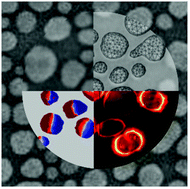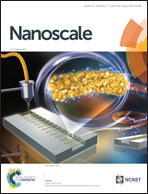Plasmon response evaluation based on image-derived arbitrary nanostructures†
Abstract
The optical response of realistic 3D plasmonic substrates composed of randomly shaped particles of different size and interparticle distance distributions in addition to nanometer scale surface roughness is intrinsically challenging to simulate due to computational limitations. Here, we present a Finite Element Method (FEM)-based methodology that bridges in-depth theoretical investigations and experimental optical response of plasmonic substrates composed of such silver nanoparticles. Parametrized scanning electron microscopy (SEM) images of surface enhanced Raman spectroscopy (SERS) active substrate and tip-enhanced Raman spectroscopy (TERS) probes are used to simulate the far-and near-field optical response. Far-field calculations are consistent with experimental dark field spectra and charge distribution images reveal for the first time in arbitrary structures the contributions of interparticle hybridized modes such as sub-radiant and super-radiant modes that also locally organize as basic units for Fano resonances. Near-field simulations expose the spatial position-dependent impact of hybridization on field enhancement. Simulations of representative sections of TERS tips are shown to exhibit the same unexpected coupling modes. Near-field simulations suggest that these modes can contribute up to 50% of the amplitude of the plasmon resonance at the tip apex but, interestingly, have a small effect on its frequency in the visible range. The band position is shown to be extremely sensitive to particle nanoscale roughness, highlighting the necessity to preserve detailed information at both the largest and the smallest scales. To the best of our knowledge, no currently available method enables reaching such a detailed description of large scale realistic 3D plasmonic systems.



 Please wait while we load your content...
Please wait while we load your content...